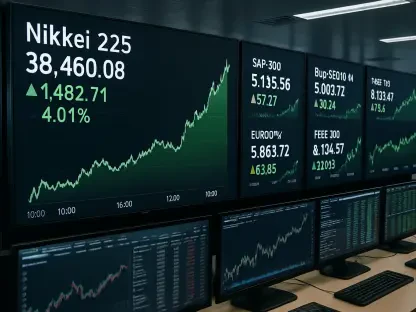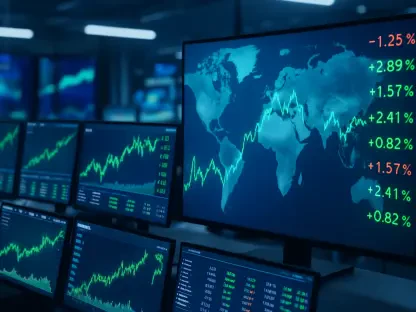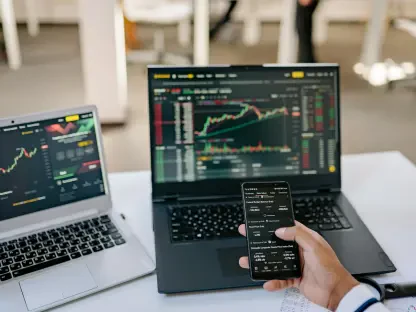Non-Fungible Tokens (NFTs) have erupted into the digital landscape, fundamentally altering how we view and value art and collectibles. From Beeple’s monumental $69.3 million sale at Christie’s to the innovative applications extending beyond art, NFTs are redefining digital ownership on the blockchain in unprecedented ways. These digital assets represent a convergence of technology, finance, and creativity, sparking debate and intrigue across various industries. This article delves into the phenomenon of NFTs, examining their origins, the mechanics behind them, the associated risks, and their prospective future applications.
Understanding NFTs: A New Paradigm in Digital Ownership
Non-Fungible Tokens, or NFTs, represent unique digital assets that differ fundamentally from their fungible counterparts like cryptocurrencies. Each NFT carries unique identifying information, making it irreplaceable and one of a kind. Utilizing blockchain technology, NFTs offer unparalleled security, transparency, and authenticity in terms of ownership, marking a significant shift in how digital transactions occur. Blockchain’s immutable ledger provides an incontrovertible record of ownership, rendering NFTs tamper-proof and highly trustworthy.
NFTs can be linked to digital art, music, videos, and even tangible items, securely recorded on the blockchain. This linkage not only provides verifiable proof of ownership but also addresses long-standing issues such as counterfeiting and unauthorized reproductions. The ability to create and verify a digital certificate of ownership for practically any asset represents a profound innovation, affecting sectors beyond just the art world. By understanding the foundational aspects of NFTs, one can grasp their enormous potential and far-reaching implications across various industries.
The Rise and Evolution of NFTs
The NFT market catapulted into public consciousness with significant, headline-grabbing sales that captured media attention worldwide. The most notable example is Beeple’s “Everydays — the First 5000 Days,” which was auctioned at Christie’s for an astounding $69.3 million. This sale not only demonstrated the enormous value and demand for unique digital assets but also validated NFTs as a new frontier in art and collectibles. It showcased how digital art could rival traditional art markets in terms of both price and prestige.
However, the NFT market has not been without its highs and lows. Following the initial surge, the market experienced notable fluctuations, particularly during the economic downturn linked to the 2022 bear market and the collapse of the cryptocurrency exchange FTX. These events caused significant drops in NFT prices, highlighting the market’s speculative nature. Despite these challenges, the foundational technology behind NFTs continues to attract interest from both investors and creators, who see long-term potential beyond the short-term volatility.
Creating and Purchasing NFTs
Minting an NFT involves converting a digital file into a token on the blockchain, thereby creating a secure, verifiable digital asset. This process typically requires the payment of a small fee in cryptocurrency and involves setting parameters such as metadata and royalty percentages. Specialized platforms like OpenSea, Nifty Gateway, and Foundation facilitate this minting process, making it accessible to artists and creators around the globe. These platforms provide user-friendly interfaces that simplify the complexities of blockchain technology, enabling widespread participation in the NFT market.
Purchasing NFTs is primarily conducted through these marketplaces, where buyers can browse, trade, and acquire digital assets, often incurring transaction fees. The critical aspect of these transactions is the verification and authenticity guaranteed by blockchain technology, which provides a secure environment for investing in digital art. For buyers, the appeal lies in the transparency and security that blockchain offers, ensuring that their purchased assets are genuine and that ownership records are immutable. This added layer of security has transformed digital art investment into a more structured and reliable endeavor.
The Risks and Challenges of NFT Investments
While NFTs offer compelling opportunities, they also come with significant risks. The highly speculative nature of the market means values can fluctuate drastically, sometimes within short periods. The volatility is compounded by various risks associated with digital assets, including scams and fraudulent activities such as wash trading and rug-pulling schemes. Wash trading involves artificially inflating the value of an asset through repeated buying and selling within a closed group, while rug-pulling refers to investment projects that abruptly cease operations and disappear with investors’ funds. Because of these risks, due diligence and thorough research are crucial for any investor considering NFTs.
Understanding the potential pitfalls and exercising caution is essential when navigating the NFT landscape. Investors must verify the authenticity of NFTs and their associated metadata, comprehend market dynamics, and be wary of offers that seem too good to be true. Engaging with reputable platforms and conducting background checks on creators and sellers can mitigate some risks. By gaining in-depth knowledge and remaining vigilant, investors can better safeguard their assets, making informed decisions in this unpredictable market.
NFTs Beyond Art: Potential Applications
The utility of NFTs extends far beyond the realm of digital art, with potential applications spanning various fields. In the education sector, for instance, NFTs could be used to secure academic credentials, ensuring their authenticity and reducing fraud. This application could revolutionize how academic records are verified and shared, offering a more secure and efficient method than traditional paper-based certificates. Event ticketing is another promising application, where blockchain technology can verify tickets and reduce the risk of counterfeiting, providing a seamless and secure experience for both organizers and attendees.
Additionally, the gaming industry sees promising integrations, where NFTs can represent in-game assets such as characters, skins, and other digital items. This not only ensures true ownership for players but also enables the transferability and trading of in-game assets across different gaming platforms. The immutable and transparent nature of blockchain technology makes these applications not only feasible but also highly impactful, adding layers of security and authenticity previously unattainable. Such applications demonstrate the versatility of NFTs, showcasing their potential to disrupt various industries and offer innovative solutions.
The Speculative Nature of the NFT Market
The volatility witnessed within the NFT market underscores its inherently speculative nature. While some NFTs have commanded prices running into the millions, others may not hold lasting value, making the market highly unpredictable. This unpredictability makes investing in NFTs akin to high-stakes gambling, where substantial rewards can come with significant risks. Investors are advised to approach NFTs as a segment of a diversified portfolio, recognizing the potential for both substantial gains and severe losses. This cautious approach helps mitigate the risks and provides a balanced perspective on digital asset investment.
Educating oneself on market trends, understanding the underlying blockchain technology, and following reputable sources can help navigate some of the inherent risks associated with NFT investments. By staying informed and exercising prudence, investors can better manage the speculative aspects of the market, making wise decisions that align with their financial goals. Such informed strategies are crucial for anyone considering a foray into the ever-evolving world of NFTs.
Achieving Security and Authenticity in Digital Art
One of the most transformative aspects of NFTs is their ability to guarantee security and authenticity in digital art forms. Traditionally, digital art has lacked a secure method for proving ownership and authenticity, often falling victim to unauthorized use and distribution. NFTs provide a solution by recording transactions and ownership history on a transparent, immutable ledger, ensuring that the authenticity of digital artworks can be verified conclusively. This authentication process not only preserves the integrity of the digital art market but also allows artists to monetize their work effectively, creating new revenue streams.
Artists can set royalties within the NFT smart contracts, ensuring ongoing compensation whenever their work is resold. This feature creates a sustainable financial model for digital creators, offering them a source of recurring income that traditional art sales cannot provide. By leveraging NFTs, artists can secure their intellectual property rights while fostering a closer, more engaging relationship with their collectors. This enhanced control over their work and earnings represents a significant advancement in the digital art ecosystem, empowering artists in ways that were previously unimaginable.
The Future of NFTs and Blockchain Technology
Non-Fungible Tokens (NFTs) have made a significant impact on the digital world, transforming how we perceive and value art and collectibles. NFTs use blockchain technology to create a secure and unique proof of ownership for digital assets. The most famous example is Beeple’s digital artwork sale for $69.3 million at Christie’s auction house, a clear demonstration of the substantial value these digital tokens can hold. However, NFTs go beyond just art; they are being used in various industries for different applications, hinting at a promising future for digital ownership.
The rise of NFTs represents a blend of technology, finance, and creativity, stirring both debate and fascination across different fields. These digital assets allow creators to monetize their work in ways previously impossible, offering a new revenue stream and reshaping traditional markets. Despite the excitement, it’s important to consider the associated risks, including environmental concerns due to the blockchain’s energy consumption and the potential for speculative bubbles.
This article explores the journey of NFTs, from their inception to their potential future roles. It discusses how NFTs work, the risks involved, and how they might evolve. As we move forward, understanding NFTs’ impact and potential is crucial for navigating the digital landscape.









